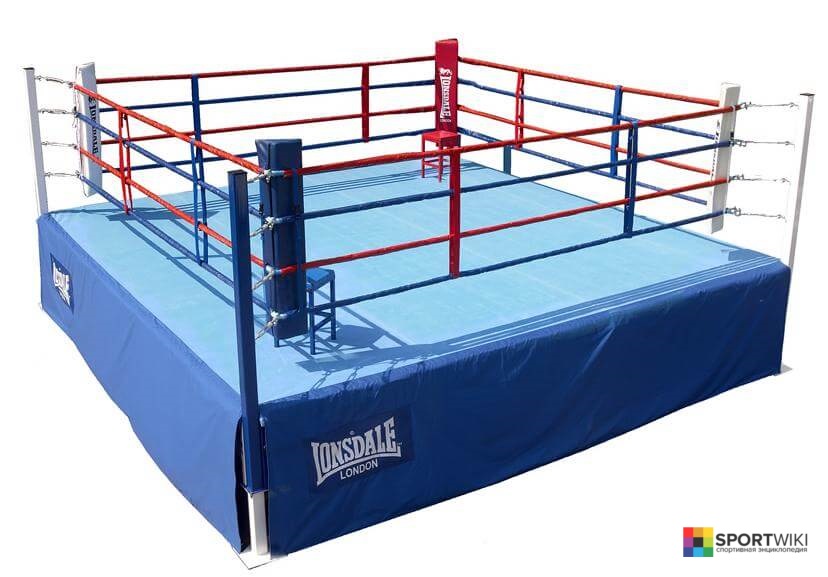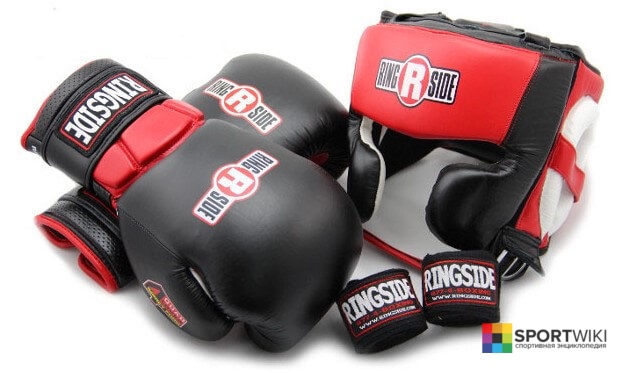Boxing
Boxing is a contact sport (martial art) in which it is allowed to perform punches only with the fists and with special boxing gloves.
Contents
History of Boxing
The history of boxing is traced back more than one thousand years. Various mentions of fisticuffs are found in Egypt (the pictures on frescoes), as well as on Minoan and Sumerian reliefs. According to different sources of information, the first finds date either from 4000 BC or from 7000 BC. It is believed that boxing started to be considered as the type of martial arts in 688 BC when it was included in the program of the ancient Olympic Games.
The birthplace of modern boxing is England (early 17th century). The founder and first boxing champion is considered to be James Figg. What is interesting, before being engaged in boxing, James was a famous fencer. Later, he opened the boxing academy and began to teach all those who wanted to learn the art of hand-to-hand combat.

In 1867, the journalist John Grahen Chambers developed the first set of boxing rules. Ring size, the weight of gloves, and the duration of rounds were stipulated there. Later, these instructions formed the basis of modern boxing rules.
In 1904, boxing was included in the program of the Olympic Games.
Boxing Rules
A boxing match is divided into rounds, each of which lasts from 3 to 5 minutes, depending on the level of such match (amateur or professional). Between rounds, the boxers have 1 minute to rest.

A boxing match ends in the following cases:
- when one of the boxers is knocked down and is not able to rise for 10 seconds;
- after the third knockdown (the rule is relevant for title fights administered by the WBA);
- when one of the boxers is injured and cannot defend himself (technical knockout);
If both opponents have survived all the rounds and the knockout has not occurred, then the winner is determined by points. Although, if their score is the same even in terms of points, the boxer who has a higher score in the bigger number of rounds is considered to be the winner. Sometimes the matches end in a draw.
In addition to the fact that it is prohibited for boxers to hit with the help of any part of the body except the fist, it is also forbidden for them to hit below the belt, hold an opponent, push, bite, spit, and struggle.
The list of prohibited techniques:
- punch below the belt;
- punch (or a dangerous movement) with the head;
- punch to the back of the head;
- kidneys punch;
- back punch;
- open-glove punch (with the edge or the back of gloves, especially with the laces);
- capturing (of the head, arms, gloves, torso);
- capturing with punching;
- bending over;
- pressing the opponent's face with the help of the hand;
- turning back on the enemy;
- pushing the opponent;
- using ropes for punching;
- grabbing ropes.
The entire course of the bout is controlled by the referee. He can punish the participants for violating the rules by warning, withdrawing points or even by disqualification.
Boxing Ring
- Size. The ring should have the shape of a square with one side of at least 4.90 m. The maximum distance between the ropes is 6.10 m. When holding international championships, a ring with a side of 6.10 m must be used. The ring must be located on the platform that is at least 91 cm high. But it should be no higher than 1.22 m from the level of the floor or the basis.
- Platform and corners. The platform should be constructed according to the safety requirements. It must have a flat floor and be free from any obstacles. It should extend beyond the ropes for not less than 46 cm on each side. In the corners of the ring, there must be installed four corner posts, which must be well-protected with special pillows or placed in a different manner to prevent possible injuries. The corner pillows should be located as follows: in the nearest left corner (in relation to the table of the Chairman of the jury), there has to be the red one, in the far left corner, there should be a white one, in the far right corner, there should be the blue one, and in the nearest right corner, there should be a white one.
- Floor covering. The floor must have a coating of felt, rubber or other approved material with the same elasticity. The thickness of this cover should be not less than 1.3 cm and not more than 1.9 cm. Tarpaulin should be stretched over this cover and tightly attached to it. Felt (rubber or other approved material) and tarpaulin should cover the entire platform.
- Ropes. The ring is limited with the help of three or four rows made of 3 cm thick ropes. These ropes must be stretched as tightly as possible between the four corner posts. The ropes must be wrapped with a soft or smooth material. On each side, they must be linked to each other by two connecting elements made of dense fabric that is 3-4 cm wide. These elements must be placed at equal intervals and they must not slip along the rope.
- Ladders. The ring must be equipped with three ladders. Two of them must be placed in opposite corners and must be used by boxers and their cornermen. The third ladder is placed in a neutral corner and is used by the Referee and Doctors.
- Plastic bags. In two neutral corners outside of the ring, there must be placed small plastic bags, where the Referee will throw out cotton wool and tampons used to help the boxers if bleeding occurs.

Boxing Equipment
Participants in a boxing match must be dressed and equipped as follows:
- Clothing. Boxers must wear lightweight shoes with no spikes and heels, as well as socks, pants (not longer than the knee level), and a tank top covering their chest and back.
- Mouthpiece. It is a flexible plastic device used to protect teeth from sports injuries.
- Jockstrap. It is used to protect the groin.
- Gloves. Red or blue gloves (according to the color of boxer’s corner in the ring). They must be provided by the organizers of the competition. According to the requirements of the International Boxing Association, gloves should weigh 284 grams, and the weight of the leather part should constitute no more than half of the total weight.
- Bandages. They are used to prevent the injuries of a wrist, fists, and fingers.

Weight Classes
Professional boxing:
- Over 90.718 kg – heavy weight;
- Up to 90.718 kg – cruiserweight;
- Up to 79.378 kg – light heavyweight;
- Up to 76.203 kg – super middleweight;
- Up to 72.574 kg – middleweight;
- Up to 69.85 kg – junior middleweight;
- Up to 66.678 kg – welterweight;
- Up to 63.503 kg – junior welterweight;
- Up to 61.235 kg –lightweight;
- Up to 58,967 kg – junior lightweight;
- Up to 57.153 kg – featherweight;
- Up to 55.225 kg – junior featherweight;
- Up to 53.525 kg – bantamweight;
- Up to 52.163 kg – junior bantamweight;
- Up to 50.802 kg – flyweight;
- Up to 48.988 kg – junior flyweight;
- Up to 47.627 kg – mini flyweight.
Amateur Boxing:
- Over 91 kg – super heavyweight;
- 81-91 kg – heavyweight;
- 75-81 kg – light heavyweight;
- 69-75 kg – middleweight;
- 64-69 kg – welterweight;
- 60-64 kg – light welterweight;
- 56-60 kg – lightweight;
- 52-56 kg – bantamweight;
- 49-52 kg – flyweight;
- 46-49 kg – light flyweight.
Refereeing
Competitions and matches are served by the board of referees consisting of the following members:
- The Chief Referee of the competition supervises the adherence to all the rules and makes the final decision about all the technical issues.
- Side referees evaluate the actions of boxers and decide on the outcome of the match.
- Timekeeper.
- Public address announcer.
- Doctor.
- Supervisor.
Boxing Organizations
- World Boxing Council (WBC)
- World Boxing Association (WBA)
- International Boxing Federation (IBF)
- World Boxing Organization (WBO)
- International Boxing Organization (IBO)
- World Federation of Professional Boxing (WPBF)
- Pan-Asian Boxing Association (РАВА)

